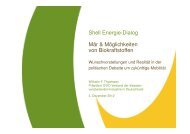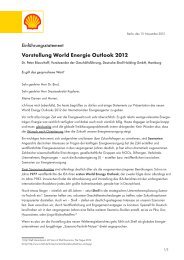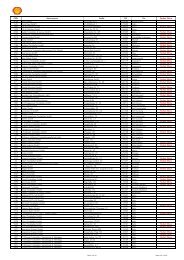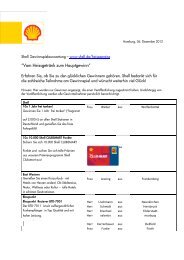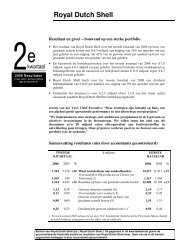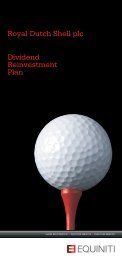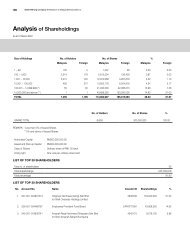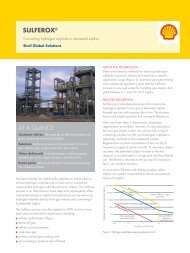ENVIRONMENTAL STATEMENT BARDOLINO DEVELOPMENT
ENVIRONMENTAL STATEMENT BARDOLINO DEVELOPMENT
ENVIRONMENTAL STATEMENT BARDOLINO DEVELOPMENT
You also want an ePaper? Increase the reach of your titles
YUMPU automatically turns print PDFs into web optimized ePapers that Google loves.
Bardolino Development Environmental Statement<br />
The species comprising the pelagic community at Nelson are mobile, and so would be<br />
unlikely to be exposed for a long period of time to the very locally enhanced concentrations of<br />
oil that might be present at the discharge point, and they are widely distributed in the water<br />
masses that flow over large areas of the North Sea (Section 4). There are no known<br />
sensitive pelagic invertebrate species at Nelson, and the amounts of oil that might reach the<br />
benthos would be infinitesimally small. It is therefore concluded that the permitted discharge<br />
of an additional amount of oil in produced water (estimated to be a maximum of about 3.6 t of<br />
oil each year) as a result of the Bardolino operations, would be unlikely to pose a significant<br />
threat to the viability or well-being of populations of plankton, or pelagic or benthic<br />
invertebrates.<br />
Fisheries sensitivity maps show that Nelson lies within the spawning areas for lemon sole,<br />
Nephrops, and Norway pout (Section 4.4.3). These species all spawn over wide areas of the<br />
North Sea, so the viability of the species would be unlikely to be impacted by the permitted<br />
discharge of produced water.<br />
6.8.3 Contribution to transboundary, cumulative or global impacts<br />
The Nelson platform is more than 40 km from the UK/Norwegian median line. Given the low<br />
concentration of oil in the produced water discharge, and the effective and rapid dispersion<br />
and dilution to which produced water would be subject at the host location, it is considered<br />
unlikely that there would be any transboundary effects as a result of the additional produced<br />
water discharge originating from the Bardolino operations.<br />
It is estimated that the Bardolino development will increase the total volume of oil discharged<br />
annually in produced water at Nelson by a maximum of approximately 3.6 tonnes. It is<br />
considered that this relatively small contribution to the total volume of produced water<br />
discharged in the region would not result in a significant cumulative effect either locally or<br />
regionally, and would thus not cause a significant effect on the marine environment. There<br />
are not expected to be any global impacts associated with produced water discharges<br />
originating from the Bardolino development.<br />
6.8.4 Consultee concerns<br />
No concerns were raised through the informal consultation process (Section 1.6).<br />
6.8.5 Adequacy of proposed mitigation measures<br />
Shell will monitor the impact on produced water quality from the increase in the quantity of<br />
corrosion inhibitor at Nelson to ensure that any impact is minimised.<br />
The increase in the total quantity of produced water discharged at the Nelson facility will be<br />
equivalent to less than 1% of the total quantity currently discharged by the facility.<br />
Engineering work is under way to improve the “up time” of the Nelson PWRI facility from the<br />
current level of 60% to 80%. This work is due to be completed prior to the start up of the<br />
Bardolino field and will ensure that a greater proportion of the fields’ produced water is reinjected<br />
into the reservoir, rather than being discharged to sea.<br />
The produced water from the Bardolino development would be treated by the existing<br />
produced water treatment system on the Nelson platform. Produced water would be treated<br />
so that at discharge the oil-in-water concentration of the produced water was well within the<br />
current BERR statutory limit of 30mg/l.<br />
The concentration of oil in produced water will be routinely monitored at least twice a day,<br />
using the method approved by BERR, and will be reported through the UK Environmental<br />
Emissions Monitoring System (EEMS).<br />
Page 6-34 April 2008


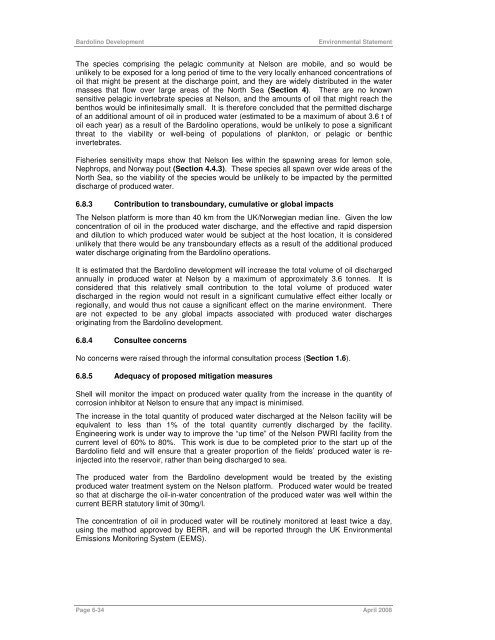
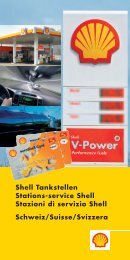
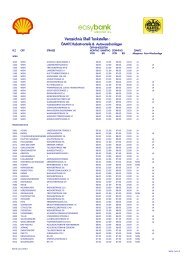
![Download Shell AutoGas Stationen [Stand: Januar 2013] (PDF](https://img.yumpu.com/9982753/1/190x245/download-shell-autogas-stationen-stand-januar-2013-pdf.jpg?quality=85)
